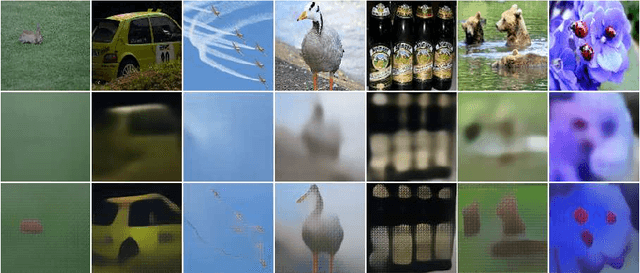Rijnder Wever
Subitizing with Variational Autoencoders
Aug 01, 2018



Abstract:Numerosity, the number of objects in a set, is a basic property of a given visual scene. Many animals develop the perceptual ability to subitize: the near-instantaneous identification of the numerosity in small sets of visual items. In computer vision, it has been shown that numerosity emerges as a statistical property in neural networks during unsupervised learning from simple synthetic images. In this work, we focus on more complex natural images using unsupervised hierarchical neural networks. Specifically, we show that variational autoencoders are able to spontaneously perform subitizing after training without supervision on a large amount images from the Salient Object Subitizing dataset. While our method is unable to outperform supervised convolutional networks for subitizing, we observe that the networks learn to encode numerosity as basic visual property. Moreover, we find that the learned representations are likely invariant to object area; an observation in alignment with studies on biological neural networks in cognitive neuroscience.
 Add to Chrome
Add to Chrome Add to Firefox
Add to Firefox Add to Edge
Add to Edge